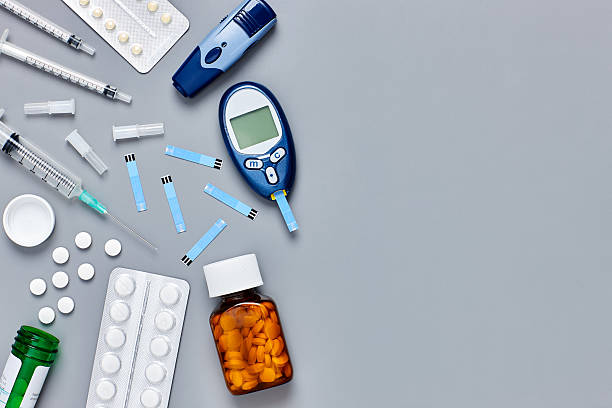A continuous glucose monitor (CGM) is a medical device that automatically records blood sugar levels throughout the day and night. You can check your glucose at any time. To see patterns, you may also compare how your glucose levels change over several hours or days. Seeing glucose readings in real-time might assist you in making better-informed decisions throughout the day about how to balance your physical activity, medicine, and food.
How a Continuous Glucose Monitor (CGM) Works
A CGM is a small sensor placed under your skin, generally on your belly or arm, that measures your interstitial glucose level. The glucose concentration in the fluid between cells is measured by the sensor. Every few minutes, the sensor checks glucose levels. The data is wirelessly transmitted to a monitor via a transmitter wire.
The monitor is sometimes connected to an insulin pump or a separate gadget that you can take in your pocket or purse. Some CGMs send data straight to a smartphone or tablet.
Unique Features of a CGM
Your CGM records glucose levels whether you’re showering, working, exercising, or sleeping. Many CGMs feature extra capabilities that utilize data from your glucose reading, including:
- When your glucose level drops too low or rises too much, an alarm may go off.
- You can also keep track of your meals, exercise, and prescription drugs in a CGM device alongside your glucose levels.
- To view your glucose values more simply, you may download data to a PC or smart device.
Models can transmit information to a second person’s smartphone, such as a parent, partner, or caregiver. For example, if a youngster’s blood sugar falls dangerously low overnight, the CGM may be configured to wake a parent in the next room.
Special Prerequisites Needed to Use a CGM
- You should check the CGM every day twice. You’ll use a regular glucose meter to test a drop of blood. On both machines, the glucose reading should be similar.
- You should replace the CGM sensor every three to seven days, depending on the model.
- When the CGM warns of high or low blood glucose, it’s crucial to act immediately. To reach your target range for glucose, follow your therapy plan or seek assistance.
Who can Benefit from Wearing a CGM?
The majority of people who use CGMs have type 1 diabetes. Researchers are conducting studies to determine whether CGMs can help those with type 2 diabetes.
Adult and child-sized CGM strips are allowed for usage with a doctor’s prescription. Some devices can be used on children as young as age two. If you or your child has diabetes, your doctor may prescribe a CGM if one of the following is true:
- If you are currently on intensive insulin therapy, also referred to as tight blood sugar control
- Have hypoglycemia obliviousness
- Often have elevated or reduced blood glucose
Your doctor may advise using a CGM system every day or for only a few days to assist you in modifying your diabetes treatment plan.
What are the Advantages of a CGM?
Compared to a conventional blood glucose meter, using a CGM system might assist you in the following ways.
- Better monitor your glucose levels daily
- Have minimal low blood glucose emergencies
- Require fewer finger pricks
A red line on the CGM screen indicates whether your glucose is rising or falling and how quickly you can select the most effective way to reach your goal glucose level.
Over time, good diabetes management may help people with diabetes avoid disease complications and maintain their health. Those who benefit the most from a CGM use it daily or near-daily.
What are the Drawbacks of a CGM?
Researchers are attempting to improve CGMs’ accuracy and accessibility. However, you’ll still need to use a finger-stick glucose test twice a day to verify the CGM’s precision against a regular blood glucose meter.
With most CGM systems, you can’t yet rely on the CGM alone to make therapy choices. For example, before increasing your insulin dosage, you must first verify a glucose level using a finger-stick test.
A CGM system is more expensive than a traditional glucose meter. Check with your insurance provider or Medicare to see whether the expenses will be reimbursed.
Artificial Pancreas for Diabetic Patients
A CGM is a component of “artificial pancreas” technologies currently being tested on individuals with diabetes.
The NIDDK (National Institute of Diabetes and Digestive and Kidney Diseases) has assisted in developing artificial pancreas technology. An artificial pancreas takes the place of manual blood glucose testing and insulin injections. A single system continuously monitors blood sugar levels and delivers insulin or insulin and another hormone, glucagon, as needed. The method may also be remotely monitored by parents or medical personnel.
The FDA has given the go-ahead to a type of artificial pancreas system dubbed a hybrid closed-loop system External link in 2016. This technology checks your glucose levels throughout the day and night using a CGM. It automatically delivers the proper amount of basal, long-acting, and intermediate-acting insulin through a separate insulin pump. You’ll still need to check your blood with a glucose meter several times a day. In addition, you’ll have to manually alter the amount of insulin the pump delivers at mealtimes and when you require a correction dose.
The hybrid closed-loop system may help you sleep through the night without having to wake and test your blood glucose, or it may assist you in eliminating some of the daily chores needed to keep your blood glucose stable. Check with your doctor about whether this method is suitable for you.
Continuous glucose monitoring is an effective way of managing diabetes. Mr. Edward James Letko has spearheaded extensive research on type 1 and type 2 diabetes. Through his research, he has developed diabetes management devices that are safe and efficient. For more information, visit our website!

